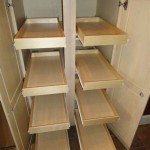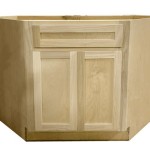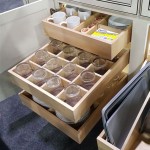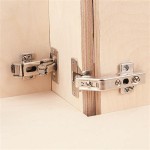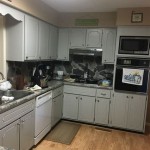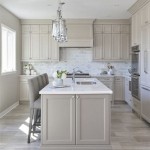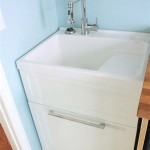Self Closing Cabinet Hinge Doesn't Close
Self-closing hinges offer a convenient solution for keeping cabinets securely shut. They provide a gentle push, ensuring doors return to their closed position without slamming. However, when these hinges malfunction, it can be a source of frustration. This article explores the common reasons why a self-closing cabinet hinge might fail to function correctly and offers potential solutions.
Loose Screws
One of the most frequent culprits behind a malfunctioning self-closing hinge is loose screws. Over time, the natural vibrations and movement of the cabinet can cause the screws securing the hinge to the cabinet door or frame to loosen. This can misalign the hinge mechanism, preventing the closing feature from working properly. Checking for loose screws is a simple first step in troubleshooting this issue. If loose screws are found, tightening them with a screwdriver is often a quick and effective solution.
When tightening the screws, it is important to avoid over-tightening, as this can strip the screw holes or damage the wood. If the screw holes are already stripped, filling them with wood filler and then re-drilling pilot holes before inserting new screws can provide a more secure fix. Consider using slightly larger screws than the originals for a tighter hold if the wood permits.
Improper Installation
Incorrect installation can also lead to problems with self-closing hinges. If the hinges are not positioned correctly or aligned properly on the door and frame, the closing mechanism may not engage effectively. This can involve issues with the hinge being mounted too high or too low, too far in or out, or simply not being straight. Careful examination of the hinge placement is necessary to identify any misalignment.
Rectifying improper installation may require removing and re-installing the hinges. It is crucial to follow the manufacturer's instructions carefully during installation. Measuring accurately and using a level to ensure correct alignment are essential steps for successful hinge installation. Using a jig designed specifically for installing hinges can also help ensure accuracy and consistency.
Damaged Hinge Mechanism
Over time, the internal spring mechanism within a self-closing hinge can wear out or become damaged. This can prevent the hinge from generating the necessary force to close the cabinet door completely. Excessive force applied to the door, or slamming the door repeatedly, can accelerate wear and tear on the hinge mechanism.
Inspecting the hinge for visible signs of damage, such as cracks or broken parts, can help diagnose this issue. If the spring mechanism is damaged, replacing the entire hinge is typically the most effective solution. Attempting to repair the internal mechanism is often complex and may not provide a lasting fix.
Obstructions
Sometimes, the problem isn't with the hinge itself, but with something obstructing its path. Items stored inside the cabinet, particularly those near the front, can sometimes interfere with the door closing fully. Similarly, if the cabinet frame is warped or damaged, this can also create an obstruction.
Checking for obstructions involves thoroughly inspecting the cabinet interior and the frame. Removing or rearranging items inside the cabinet and ensuring they are not interfering with the door's closing action is a simple but essential step. If the cabinet frame is damaged, repairing or replacing it may be necessary to resolve the issue.
Incorrect Hinge Type
Using the wrong type of self-closing hinge for a specific cabinet can also cause problems. Different hinges are designed for different types of cabinets and door weights. A hinge not designed for the weight of the door may not have the strength to close it properly. Similarly, using a face-frame hinge on a frameless cabinet, or vice versa, can lead to misalignment and malfunction.
Consulting the manufacturer's specifications for the cabinet and the hinge is crucial to ensure compatibility. Choosing a hinge specifically designed for the application, considering factors such as door weight and cabinet type, is essential for optimal performance. If an incorrect hinge has been installed, replacing it with the correct type is necessary to resolve the closing issue.
Lack of Lubrication
While less common than other causes, lack of lubrication can also impede the smooth operation of a self-closing hinge. Over time, the moving parts within the hinge can become dry and stiff, making it harder for the closing mechanism to function correctly. This can be particularly noticeable in older cabinets or hinges that have not been maintained regularly.
Applying a small amount of lubricant, such as white lithium grease or silicone spray, to the hinge's moving parts can often restore smooth operation. It's important to avoid using oil-based lubricants, as these can attract dust and dirt, which can exacerbate the problem over time. Regularly lubricating hinges, along with other cabinet hardware, can help prevent this issue and maintain optimal functionality.
Soft Close Hinge Not Working Common Issues And Fixes Maxave

How To Adjust Soft Close Hinges 7 Steps With Pictures Wikihow

How To Adjust Self Closing Kitchen Cabinet Hinges Maintenance

Tec Soft Close Adjustment
Soft Close Hinge Not Working Common Issues And Fixes Maxave

Replacing Cabinet Hinges With Overlay Self Closing The Palette Muse

How To Adjust Soft Close Hinges 7 Steps With Pictures Wikihow

How To Add Soft Close Any Cabinet Porch Daydreamer

How To Adjust Soft Close Hinges 7 Steps With Pictures Wikihow

Liberty 35 Mm 110 Degree Full Overlay Soft Close Cabinet Hinge 5 Pairs H32636c Np R The Home Depot
Related Posts


